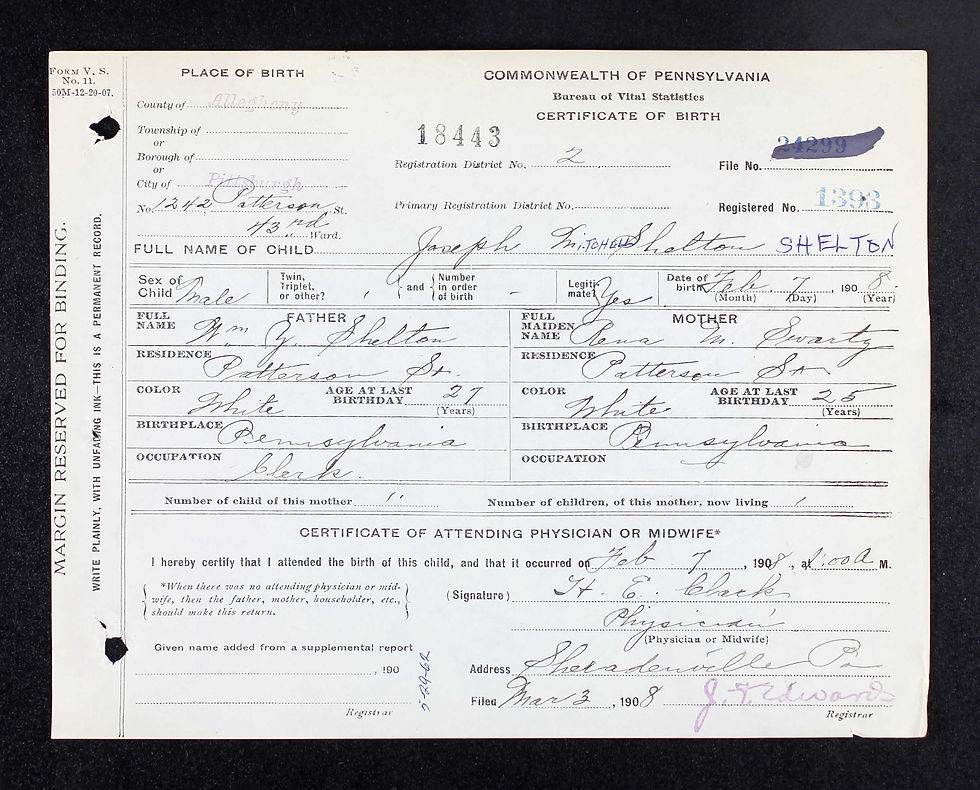Breaking Through Genealogy Brick Walls: What to Do When the Trail Goes Cold
- Brenda Franklin
- Feb 22
- 4 min read
Updated: Jun 26

You're not alone if you've been diving into your family history and suddenly hit a dead end. Every genealogist—whether a beginner or seasoned researcher—eventually faces what’s known as a brick wall. It’s that frustrating moment when records seem to vanish, names don’t match, or an ancestor appears to have fallen off the map entirely. I have reached this point more than a couple of times. I feel your pain!
But before you throw in the towel, take a very deep breath. Brick walls aren’t the end of your journey; they’re just part of the adventure. The trick is knowing where to look and how to approach the search differently.
1. Name Variations & The Power of Spelling Mistakes
One of the most common reasons for missing ancestors? Spelling errors. In the past, names weren’t as standardized as they are today. Census takers often wrote names phonetically, and immigrants sometimes changed their names to blend in. I saw this recently with a search for a surname of Ryan which used to be Rion until the mid 1800s.
Try searching for alternate spellings, abbreviations, or phonetic variations. If your ancestor’s last name was Cryer, try searching for Crier, or even Cryr. Many genealogy sites allow oddball searches—so instead of “Cryer,” try searching Cry?r to catch variations.
2. When Census Records Let You Down
Census records are one of the most valuable tools for family research—but they’re also filled with errors. Some records were damaged or lost over time, while others contain handwriting mistakes or incorrect ages.
If you can’t find your ancestor, don’t give up. Look for neighbors with the same last name. Families often lived close to one another and I can say I have gotten lucky looking at the names of those living right next door. Try using age and location suggestions rather than searching by exact names. If an official census record isn’t available, city directories, tax lists, and land records can help fill in the gaps.
3. The Mysterious Case of the Disappearing Women
Have you ever been in my shoes when you searched for a female ancestor, only to have her vanish from records after marriage? Historically, women were often listed under their husband’s name (e.g., “Mrs. John Smith”), making it harder to trace them individually.
Marriage records can be a goldmine for finding maiden names and linking female ancestors to their birth families. Obituaries, wills, and church records are also fantastic resources, as they often list female relatives by both maiden and married names. Thank Pete!!
4. Ancestors on the Move: When They Vanish from One Place
If an ancestor was in one place and then suddenly gone, chances are they moved—but where? Families relocated for work, war, or economic opportunities, and tracking their migration patterns can lead you to missing records.
Look at historical migration routes, such as wagon trails, railroad expansions, and immigration waves. If they lived near a state or county border, check records in neighboring areas—people often moved just a few miles but ended up in a completely different jurisdiction.
5. The Challenge of Common Names
If your ancestor had a name like John Smith, you might feel like finding them is impossible. But don’t lose hope! Details like occupation, family members, and addresses can help distinguish them from others with the same name.
Check middle names and initials, as they were often used to differentiate individuals. DNA testing can also be helpful—comparing your DNA matches to a suspected family line may help confirm relationships.
6. The Frustration of Missing Birth, Marriage, or Death Records
Not all birth and death records exist—many states didn’t require them until the 1900s. If you can’t find an official birth certificate your best bet is to look at church baptism records, which were often used instead of government records in earlier years.
One of my favorites are Newspapers. (Read more in my blog post: 5 Surprising Things Newspapers Can Teach You About Your Ancestors). Birth announcements, wedding notices, and obituaries can reveal missing details. If all else fails, head to cemetery records—gravestones often list birth and death dates that aren’t recorded elsewhere.
Final Tips for Breaking Through Brick Walls
Expand Your Search – Look into extended family members; sometimes, a sibling’s records hold the key to finding missing ancestors.
Use Historical Newspapers – Old newspapers often mention family events, local news, and even legal disputes.
DNA Testing & Matches – A DNA test might uncover unknown relatives who can help fill in the blanks.
Join Genealogy Forums & Groups – Other researchers may have already solved similar problems and can offer insights.
Genealogy Is a Journey, Not a Race
I know hitting a brick wall can be frustrating, but it’s also what makes genealogy exciting. Every obstacle is a new challenge to solve, and when you finally crack the mystery, the reward is incredible.
So, what’s your biggest genealogy roadblock? Have you ever broken through a family history mystery? Share your story in the comments—I’d love to hear about your journey!
And always, happy hunting!



Comments